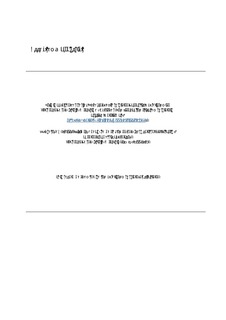| dc.contributor.author | Rødseth, Kenneth Løvold | |
| dc.coverage.spatial | Norway | nb_NO |
| dc.date.accessioned | 2019-07-04T12:13:48Z | |
| dc.date.available | 2019-07-04T12:13:48Z | |
| dc.date.created | 2014-02-05T11:29:59Z | |
| dc.date.issued | 2014-01-18 | |
| dc.identifier.citation | Journal of Productivity Analysis. 2014, 42 (2), 211-223. | nb_NO |
| dc.identifier.issn | 0895-562X | |
| dc.identifier.uri | http://hdl.handle.net/11250/2603415 | |
| dc.description.abstract | This paper treats efficiency measurement when some outputs are undesirable and producers control pollutants by end-of-pipe or change-in-process abatement. A data envelopment analysis framework that compares producers with similar pollution control efforts is proposed. First, my approach avoids arbitrary disposability assumptions for undesirable outputs. Second, the model is used to evaluate the interplay between pollution control activities and technical efficiency. I compare my approach to the traditional neo-classical production model that does not incorporate undesirable outputs among outputs, and to Färe et al.’s (Rev Econ Stat 71:90–98, 1989, J Econom 126:469–492, 2005) well-known model that incorporates bads. I evaluate the common assumption in the literature on polluting technologies, that inputs are allocatable to pollution control, and apply U.S. electricity data to illustrate my main point: Although my empirical model specifications are in line with the literature on polluting technologies, they rely on inputs that play an insignificant role in controlling nitrogen oxides (NOx) emissions. Consequentially, there are no reasons to expect the efficiency scores of the traditional model to differ from the efficiency scores of the other two models that account for resources employed to pollution control. Statistical tests show that my model, which explicitly takes pollution control efforts into account, produces efficiency scores that are not statistically different from the traditional model’s scores for all model specifications, while Färe et al.’s model produces significantly different results for some model specifications. I conclude that the popular production models that incorporate undesirable outputs may not be applicable to all cases involving polluting production and that more emphasis on appropriate empirical specifications is needed. | nb_NO |
| dc.language.iso | eng | nb_NO |
| dc.publisher | Springer US | nb_NO |
| dc.rights | Navngivelse 4.0 Internasjonal | * |
| dc.rights.uri | http://creativecommons.org/licenses/by/4.0/deed.no | * |
| dc.title | Efficiency measurement when producers control pollutants: a non-parametric approach | nb_NO |
| dc.type | Journal article | nb_NO |
| dc.type | Peer reviewed | nb_NO |
| dc.rights.holder | © Springer Science+Business Media New York 2014 | nb_NO |
| dc.description.version | acceptedVersion | nb_NO |
| cristin.unitcode | 7482,0,0,0 | |
| cristin.unitname | Transportøkonomisk institutt | |
| cristin.ispublished | true | |
| cristin.fulltext | postprint | |
| cristin.qualitycode | 1 | |
| dc.identifier.doi | 10.1007/s11123-014-0382-2 | |
| dc.identifier.cristin | 1109633 | |
| dc.source.journal | Journal of Productivity Analysis | nb_NO |
| dc.source.volume | 42 | nb_NO |
| dc.source.issue | 2 | nb_NO |
| dc.source.pagenumber | 211-223 | nb_NO |

